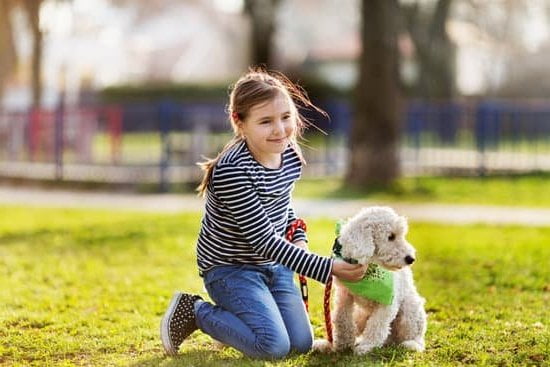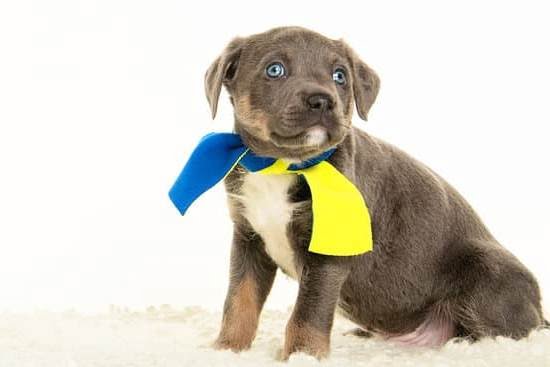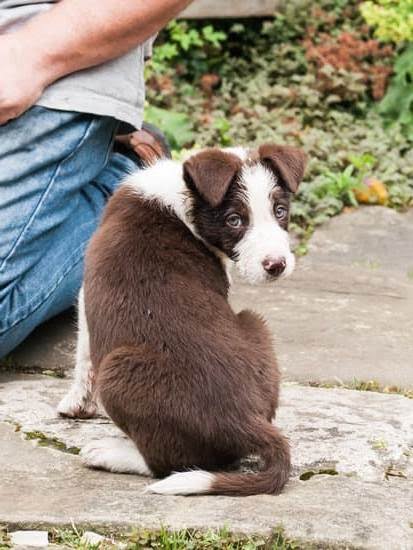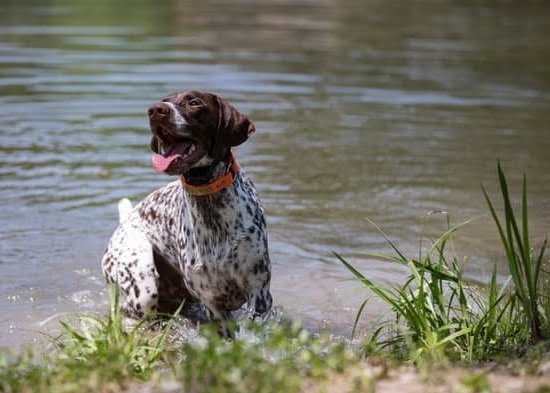Cadaver dogs play a crucial role in various fields, including search and rescue operations and crime investigations. These highly trained canines have the remarkable ability to detect the scent of human remains, providing invaluable assistance in locating missing persons or solving criminal cases. In this blog post, we will delve into the intriguing world of cadaver dogs and explore the training methods and tools used to hone their unique skills.
Cadaver dogs are specially trained to detect the odor of decomposed human bodies. Their keen sense of smell surpasses that of humans, making them exceptional partners in search operations. Whether it’s finding buried victims after natural disasters or locating evidence at crime scenes, cadaver dogs serve as a vital resource.
The specialized training required for cadaver dogs sets them apart from other types of search dogs. The challenges involved in detecting human remains necessitate specific techniques and methods tailored to their unique olfactory capabilities. Well-trained cadaver dogs are essential assets that can significantly contribute to bringing closure to families and ensuring justice is served.
Stay tuned as we dive into the science behind cadaver dog training, exploring the remarkable abilities of these canine detectives. We will also discuss the use of positive reinforcement training methods, examine why real human remains are utilized during training, explore synthetic scents mimicking decomposing bodies, and delve into various scenarios and drills that enhance their skills. Join us in uncovering the fascinating world of cadaver dogs and appreciating their incredible contributions in search and rescue operations and crime investigations.
Why Specialized Training for Cadaver Dogs?
Cadaver dogs require specialized training due to the unique challenges and skills involved in detecting human remains. Unlike other types of search dogs, cadaver dogs are trained to specifically detect the scent of decomposing bodies. This requires a different set of skills and techniques compared to search dogs trained to locate live humans or animals.
The primary reason for specialized training is the remarkable olfactory abilities of dogs. Dogs have an extraordinary sense of smell that allows them to detect and discriminate various scents, including the odor of decomposing human remains. Their ability to differentiate between different scents is crucial when searching for specific targets and distinguishing between animal remains and human remains.
Well-trained cadaver dogs play a significant role in the search for missing persons or solving criminal cases. Whether it’s finding a hidden burial site or locating scattered evidence in vast areas, cadaver dogs can efficiently cover large areas with accuracy and speed. Their expertise in detecting human remains can provide critical information that may lead investigators to uncover vital clues and ultimately bring closure to families.
Table: Unique Challenges Faced by Cadaver Dogs
| Challenges | Solutions |
|---|---|
| Distinguishing between animal and human remains | Intensive scent recognition training |
| Detecting buried or concealed human remains | Simulated recovery drills and scenario-based training |
| Searching in challenging environments (e.g., water, rubble) | Specially designed training exercises for different terrains |
The Science Behind Cadaver Dog Training
In order to understand the training methods and tools used for cadaver dogs, it is important to delve into the science behind their training. Cadaver dogs are able to detect and locate human remains due to their remarkable olfactory abilities. A dog’s sense of smell is far superior to that of humans, with research suggesting they can detect scents at concentrations of parts per trillion.
The olfactory system of a dog is intricate and highly specialized. They have over 220 million scent receptors in their nose, compared to humans who only have around 5 million. This allows them to differentiate between specific odors and identify subtle changes in scent patterns.
Positive reinforcement training plays a critical role in the training process of cadaver dogs. Dogs are taught through a reward-based system where they associate desired behaviors with positive consequences, such as play or food rewards. This type of training helps reinforce the dog’s natural instinct to search for and indicate on the scent of human remains.
| Olfactory Abilities | Training Methods |
|---|---|
| A dog’s sense of smell is far superior to humans. | Cadavers dogs are trained using positive reinforcement techniques. |
| Dogs have over 220 million scent receptors in their nose. | Reward-based system where desired behaviors are reinforced with positive consequences. |
The ability of cadaver dogs to detect human remains is based on the science of scent detection. When an individual decomposes, they release a unique combination of volatile organic compounds (VOCs) that create a distinct odor profile. These VOCs are what cadaver dogs are trained to detect, even when buried or concealed.
To aid in the training process, synthetic scents are used to mimic the smell of decomposing bodies. These synthetic scents are designed to replicate the specific odor profile of human remains and are produced using various organic materials. They provide a consistent and reliable scent source for training cadaver dogs, ensuring that their olfactory skills remain sharp.
Basic Training Techniques for Cadaver Dogs
Cadaver dogs play a vital role in search and rescue operations and crime investigations, utilizing their incredible olfactory abilities to detect the scent of human remains. However, this remarkable skill does not come naturally to dogs and requires specialized training. In this section, we will explore the basic training techniques used to train cadaver dogs.
One of the key aspects of training cadaver dogs is scent recognition and discrimination. These dogs need to be able to distinguish between different scents and identify the specific odor associated with decomposing human remains. Trainers use various methods to teach these skills, including exposure to a range of scents and rewarding the dog for correctly indicating the target odor.
Positive reinforcement training methods are commonly employed in cadaver dog training. This involves rewarding the dog with treats, praise, or play for exhibiting desired behaviors. By associating the correct response with positive outcomes, such as finding the target odor or indicating its presence, cadaver dogs learn to focus on locating human remains effectively.
Additionally, proper handling and control during searches are essential skills that cadaver dogs must develop. Trainers use techniques such as leash manners, direction commands, and obedience training to ensure that the dogs can work effectively in various environments without becoming distracted or overly excited.
The Importance of Using Real Human Remains in Training
The use of real human remains in training is a critical aspect of preparing cadaver dogs for their important tasks. While some might find this practice unsettling, it is essential to understand why it is necessary and the challenges associated with using real human remains.
The Use of Real Human Remains
One might wonder why synthetic alternatives are not sufficient for training cadaver dogs. The primary reason is that the scent emitted by decomposing human remains is incredibly complex and unique. Synthetic scents can replicate some aspects of this smell, but they cannot fully capture its nuances. By using real human remains, trainers ensure that cadaver dogs become accustomed to the specific odor they will encounter in actual search operations or criminal investigations.
However, obtaining and handling real human remains for training purposes present numerous challenges. Firstly, there are ethical considerations that must be taken into account to ensure proper respect and dignity for the deceased individuals. Additionally, there are legal requirements and regulations surrounding the acquisition, storage, and transportation of human remains. Trainers must adhere to these guidelines to uphold professional standards and avoid any potential legal issues.
Addressing Ethical Considerations
To address ethical concerns, strict protocols are implemented to ensure that the use of real human remains in cadaver dog training is conducted responsibly. These protocols involve obtaining informed consent from donors or their families, ensuring proper authorization from relevant authorities, and treating all remains with utmost respect throughout the training process.
Trainers often work closely with forensic experts or medical examiners who can provide guidance on acquiring appropriate specimens while adhering to ethical standards. This collaboration allows trainers to obtain a wide range of samples representing different stages of decomposition and conditions typically encountered in real-life scenarios.
Overall, while using real human remains in cadaver dog training may raise initial hesitations or discomfort for some individuals, it plays a crucial role in preparing these remarkable animals for their life-saving work. With careful consideration of ethical concerns and adherence to legal regulations, the use of real human remains enables trainers to ensure that cadaver dogs are well-prepared and capable of accurately detecting and locating human remains in various situations.
Synthetic Scents
Synthetic scents are an essential tool in the training of cadaver dogs. These scents are used to mimic the smell of decomposing bodies, allowing cadaver dogs to develop their scent detection skills and locate human remains accurately. Synthetic scents play a crucial role in preparing cadaver dogs for real-life search operations and crime investigations.
Producing synthetic scents involves careful scientific processes to replicate the complex odor profile of decomposing bodies. Various chemicals and compounds are combined to create a scent that closely resembles the smell of human remains. These synthetic scents are designed to be consistent in quality, ensuring that cadaver dogs receive reliable training experiences.
One significant advantage of using synthetic scents is their durability. Unlike real human remains, which decay over time and may not always be readily available for training purposes, synthetic scents can withstand long-term use without losing their effectiveness. This durability allows trainers and handlers to continuously train cadaver dogs without having to rely solely on obtaining actual human remains.
During training sessions, synthetic scents are strategically placed in controlled environments or hidden within specific objects or locations where human remains might be present during real search operations. Cadaver dogs are trained to detect these synthetic scents and alert their handlers to their presence. By repeatedly working with these artificial smells, cadaver dogs develop strong associations between the scent and the desired behavior, reinforcing their ability to detect real human remains accurately.
Training Scenarios and Simulated Recovery Drills
Once the basic training techniques for cadaver dogs have been established, it is essential to expose these dogs to a wide range of realistic scenarios and simulated recovery drills. This section will explore the importance of training in different scenarios and how it enhances the abilities of cadaver dogs to locate human remains.
The Importance of Realistic Training Environments
Creating realistic training environments is crucial in preparing cadaver dogs for real-life search situations. These training scenarios aim to mimic actual search and recovery operations as closely as possible, allowing the dogs to practice their skills in settings that reflect what they will encounter during their work. For example, trainers may set up mock crime scenes or search areas that incorporate elements such as rubble, forested terrain, or bodies of water.
By exposing cadaver dogs to a variety of environments and challenges, trainers can enhance their ability to navigate different terrains effectively. This includes teaching them how to work both indoors and outdoors, in urban or rural settings, and even underwater in certain cases. The more diverse the training environment, the better equipped the dog will be when faced with real-world search scenarios.
Mock Crime Scenes and Search Areas
One specific type of scenario that plays a crucial role in cadaver dog training is using mock crime scenes or search areas. These simulations involve placing real or synthetic scents that resemble decomposing human remains at strategically chosen locations within controlled environments. Trainers then observe and evaluate the dog’s behavior and response as they guide them through these staged scenes.
The purpose of using mock crime scenes or search areas is not only to hone the dog’s scent detection skills but also to expose them to distractions they may encounter during actual searches. For instance, there may be various sources of smells competing for attention within a simulated urban environment. By replicating these challenging situations during training sessions, cadaver dogs learn to focus their attention on the target scent and overcome potential distractions that could impede their search efforts.
Training scenarios and simulated recovery drills allow cadaver dogs to develop and refine their skills in different contexts. By gradually increasing the complexity of these scenarios, trainers can continuously challenge the dogs’ abilities while providing them with opportunities to succeed and reinforce positive behaviors. This type of training is essential in preparing cadaver dog teams for real-life search missions, ensuring they are well-equipped to find human remains efficiently, accurately, and safely.
Continuous Training and Certification of Cadaver Dogs
The success and reliability of cadaver dogs in search and rescue operations and crime investigations hinge on their continuous training and certification. Training a cadaver dog is an ongoing process that requires consistent practice, reinforcement, and exposure to various scenarios. Additionally, certification ensures that the dog and handler meet rigorous standards set by professional organizations. This section will delve into the necessity of continuous training for cadaver dogs and the certification process they undergo.
Continuous training is crucial for cadaver dogs as it helps maintain and enhance their scent detection skills. Due to the dynamic nature of search operations, it is important for these dogs to remain sharp and adaptable in different environments. Training sessions typically involve exercises such as scent recognition, discrimination, searching techniques, and obedience commands.
To keep cadaver dogs proficient in recognizing human remains, trainers utilize a variety of training aids including synthetic scents that mimic the smell of decomposing bodies. These synthetic scents are designed to provide consistent quality and durability, allowing trainers to create realistic scent scenarios during training sessions.
Certification is essential for ensuring the reliability and accuracy of cadaver dog teams. Professional organizations like the North American Police Work Dog Association (NAPWDA) and the International Police Work Dog Association (IPWDA) have established standards that include written exams, practical tests, and evaluations conducted by experienced handlers or judges.
Furthermore, certifications need to be renewed on a periodic basis to ensure that both the dog and handler continue to demonstrate competence in their respective roles. Recertification typically involves testing in real-life scenarios or simulated searches to assess the teams’ abilities accurately.
Conclusion
In conclusion, cadaver dogs play a truly remarkable role in various fields, such as search and rescue operations and crime investigations. Their specialized training and unique skills make them invaluable partners in the search for missing persons and the solving of criminal cases. Throughout this blog post, we have explored the science behind cadaver dog training, including their remarkable olfactory abilities and the use of positive reinforcement techniques.
Training cadaver dogs involves a combination of scent recognition and discrimination training, utilizing reward-based methods such as play or food rewards to establish desired behaviors. The use of real human remains during training presents its own set of challenges, from obtaining them legally to handling them ethically. Nonetheless, using synthetic scents that mimic decomposing bodies has proven effective in providing consistent quality and durability.
Creating realistic training scenarios and simulated recovery drills is crucial to enhancing the dogs’ abilities to locate human remains. These drills often take place in mock crime scenes or search areas to simulate real-life situations. However, it is important to note that continuous training and certification are necessary to maintain the skills of cadaver dog teams. Rigorous testing and reevaluation procedures ensure their reliability and accuracy.
The incredible contribution of well-trained cadaver dogs cannot be overstated. They bring closure to families dealing with loss while also playing a significant role in helping solve cases. It is vital that we appreciate and support these teams by recognizing their invaluable work. Whether through spreading awareness or donating resources, we can all play a part in ensuring that cadaver dog teams continue to make a difference in our communities.
Frequently Asked Questions
What chemical are cadaver dogs trained to smell?
Cadaver dogs are trained to smell the chemical compound called cadaverine, which is produced during the process of decomposition. This compound is released by human bodies after death and emits a distinct odor that cadaver dogs are able to detect.
These highly trained dogs have an exceptional sense of smell, allowing them to locate even trace amounts of cadaverine and alert their handlers.
What breed of dog makes the best cadaver dog?
While there isn’t a single breed that is universally considered the best for cadaver detection work, certain breeds have demonstrated particular aptitude in this field. German Shepherds and Labrador Retrievers are commonly recognized as excellent choices for cadaver dog training due to their intelligence, trainability, and strong work ethic.
These breeds possess a natural instinct for scent work and can be easily trained to search for specific odors, such as those associated with human remains.
What can’t cadaver dogs detect?
Despite their remarkable olfactory capabilities, cadaver dogs have their limitations when it comes to detection. They are primarily trained to locate human remains or the specific odor compounds associated with decomposition, rather than identifying specific causes of death or any diseases present in a deceased body. Cadaver dogs focus solely on locating the scent they have been trained on and do not possess the ability to differentiate between living humans and deceased individuals.
Additionally, they cannot detect substances such as drugs or toxins unless they emit an odor recognizable to the dog’s training. Their expertise lies in locating hidden or buried remains based on scent alone.

Welcome to the blog! I am a professional dog trainer and have been working with dogs for many years. In this blog, I will be discussing various topics related to dog training, including tips, tricks, and advice. I hope you find this information helpful and informative. Thanks for reading!





